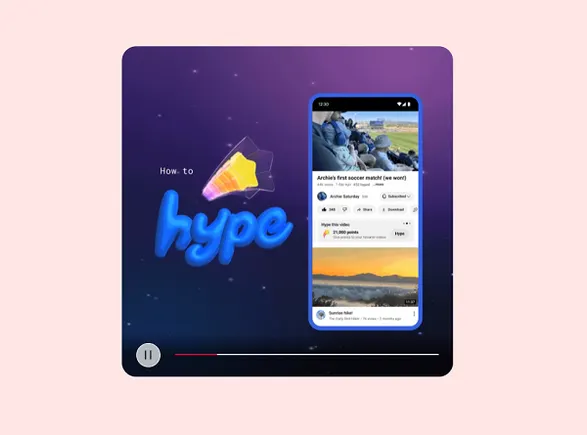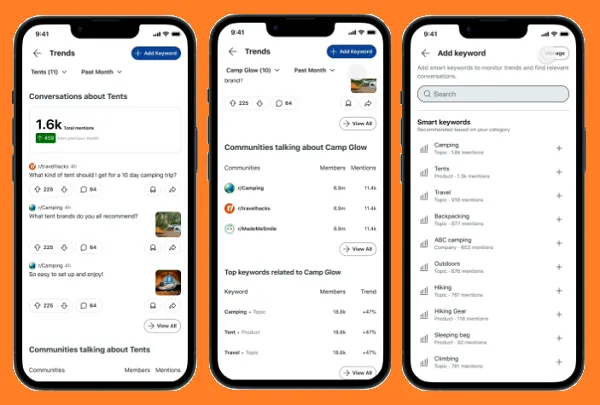Tips for Lead Generation: Finding Your Brand’s Main Characters
Your brand is a story, and lead generation identifies the main characters. Here are our best tips for finding the right people with the right content.

As a content writer, I believe every brand is a story.
No, you didn’t read that wrong. Your brand doesn’t have a story — it is a story. It’s a tale you’re telling in real time, and while your business might be the setting, your customers are the main characters.
Unfortunately, another thing my writer wisdom tells me is that “main characters” can be slippery little creatures. They’re often reluctant to leave the shadows of your creative mind, which means you have to do a lot of work just to find them. Even once you know who they are, you still need to decide which ones will flourish in your setting and help bring the story to life.
The good news is that, although fictional characters remain an enigma, real ones don’t have to be so inscrutable. You just need the right marketing solution — and that’s where lead generation (also called lead gen) comes in.
Here’s everything you need to know about finding your main characters, plus our best tips for lead generation.
What is Lead Generation?
Maybe you’ve never written a story in your life. Even so, you can probably appreciate how difficult it is to take a bunch of words and smash them together to make a person. That’s because you can’t just choose details that seem fun or interesting. There has to be an emotional throughline — a thread that weaves memories, traits and quirks into something resembling a personality. Without this, your character will look and act like a piece of cardboard — which is to say, flimsy.
Why does this matter in marketing? Simple: Organic lead generation has a whole lot in common with character creation. Think about it this way:
Character Background = Demographic Information
For me, character development often begins by creating a backstory. Maybe I’m daydreaming about a man whose parents were killed by dragons, leading him to become a knight; perhaps I’ve been thinking about a woman who chose to become a math teacher instead of following her dream to work IT at NASA. At this stage, I’m focused on things like where my character comes from, how old they are and what they do.
Sound familiar?
Hopefully, the answer is yes, because these aren’t just details from character backstories. They’re also part of your customer demographic information. Naturally, you’ll need this data to generate leads, just like writers need it to build characters.
Character Traits = Audience Preferences
Once I know my character’s background, it’s time to find out how this influences their current personality. For example, the knight might fear fire because the dragons burned his house down; the math teacher may use planetary metaphors to explain new concepts to her students.
These are character traits, and they make otherwise-flat creations come to life as almost-real people. We all have such characteristics — but in marketing, details like these are “audience preferences.” Basically, to generate leads, you need to know how demographic information influences customer expectations.
Say your target audience demographic is baby boomers. Because they didn’t grow up with technology as the younger generations did, they may prefer more straightforward marketing and communication. That means you might succeed more with an email lead generation strategy than a social media approach.
The big difference here is that lead gen requires you to understand audience preferences and cater to them. Writing, meanwhile, is more about understanding those preferences and using them to create situations your characters find uncomfortable. (Remember that knight who hates heat and fire? Yeah. I’m going to make sure the plot takes him to a volcano.)
Character Quirks = Buying Habits
Another piece of the character development puzzle is adding quirks. Generally, the background and traits I’ve already established form idiosyncrasies, but not always. My knight might polish his armor every day because his mother taught him it’s important to make a good first impression, and that’s perfectly logical — but my math teacher might really hate chocolate, which has nothing to do with their storyline.
Honestly, people are just like this in real life. Some of your quirks exist because of where you come from and what you’ve experienced, while others exist just because they’re part of who you are.
This, naturally, brings us to lead generation — specifically, customer buying habits. Sometimes, your audience will buy out of necessity or because a purchase makes sense. Other times, they’ll reach for their wallet because you happened to use a shade of green they’ve always loved and now they associate you with positive things.
Lead generation hinges on quirks like these. After all, you want to choose and pursue leads whose buying habits align with your messaging and goals. If you go after a potential lead who really doesn’t want to spend money, you’re fighting an uphill battle; meanwhile, one who’s eager to buy will be easier to recruit into your brand’s story.
Character Motivation = Customer Needs
Although the steps differ depending on the story I’m telling, the final part of my character development process is often finding character motivations. I need to know why these people are willing to leave the comforts of home and what’s driving them to act — because that also drives my plot.
Take my knight, for example. If he hates fire, why would he make a beeline for a volcano? Well, if he wants revenge and those parent-killing dragons just so happen to have a thing for lava, we know the knight’s motivation.
The same is true for my math teacher: She wants to get into space travel, but she doesn’t want to leave her familiar teaching job. Maybe the principal gives her a little nudge by proposing a field trip to NASA. This, of course, leads to a series of highly unlikely hijinks in which the teacher and her class get stuck inside a rocket headed to the moon.
Now let’s apply this concept to lead generation. You know this person’s demographic information, preferences and when/why they make purchases, so you can make educated assumptions about what drives them. You’ll use your understanding of audience needs to decide which person might be a potential lead based on how their motivation aligns with your offerings.
Subscribe to
The Content Marketer
Get weekly insights, advice and opinions about all things digital marketing.
Thanks for subscribing! Keep an eye out for a Welcome email from us shortly. If you don’t see it come through, check your spam folder and mark the email as “not spam.”
Why is Lead Generation Important?
I need to create characters to tell a compelling story. You need to generate leads to keep your business up and running. Are things really that simple?
Not exactly. As it turns out, both pursuits are even more important than you might think.
Stories Without Quality Characters
Let’s go back to character creation for a moment. You and I both know that this creation process must be done, whether I like it or not — and that’s because people are what bring stories to life. But what happens if I just copy/paste a few basic character traits and call it a day? Couldn’t my plot still work as long as it had an interesting setting and plenty of action?
As a matter of fact, it could. I bet we’ve all seen a movie where the explosions are clearly more important than the feelings of the guy trying to diffuse the bomb — and that’s OK. Sometimes a story is plot-driven instead of character-driven.
The only problem is that my story can only go so far without realistic, well-developed humans to drive it. Sure, we can blow some stuff up — but we can’t examine the impact of the explosions on the man who failed to stop them because we don’t know what makes him tick. Without quality characters, the story is limited.
The same is true for your marketing efforts — and, sometimes, your business overall.
Marketing Without Quality Leads
Say you’re not a big fan of generating leads. You figure you’ll make up for it with an excellent product and unforgettable customer service. Instead of doing your research and understanding who your main characters are before you try to make them central to your plot, you market to anyone and everyone who will listen.
The result? You end up with “customers” who aren’t actually interested in your product. Basically, they don’t belong in your story.
For example, maybe one person has been benefiting from your content marketing. They even gave you their email address so they could unlock an eBook or white paper. Unfortunately, they’re not a qualified lead because they don’t want to buy. Like, ever. You’re just wasting resources because you didn’t use the right lead generation strategies.
That’s like trying to do the plot of “Star Wars” by pulling in characters from “The Lord of the Rings.” You might generate initial interest because hobbits have no idea what a lightsaber is, and that alone has hours of comedy potential. But you wouldn’t be able to sell the whole “No, I am your father” thing because you don’t have Luke and Anakin Skywalker, not to mention the backstories that connect them — and there goes the emotional relevance and longevity of your plot.
The point is that lead generation, like character creation, isn’t just about choosing people; it’s about choosing the right people.
8 Lead Generation Tips
OK. So it’s clear that your approach to lead generation is just as important as deciding to do lead generation in the first place. But if the how is so important, what should it look like?
Here are a few lead generation tips to get you started:
#1: Use Lead Scoring
Lead scoring is a method of assigning value to each potential lead. You can do this in all kinds of ways, but for the most part, the goal is to determine whether a lead represents a real opportunity. If they’re ready to buy and excited to build a long-term relationship with your brand, they’re a great fit for “qualified lead” status. If they want to spend years debating a single purchase, they’re probably not the right character for your particular plot.
Just remember that lead scoring doesn’t always feel like progress. Sometimes your lead gen strategies bring people in and you’re on top of the world — but then your analysis results come back, and it turns out none of those leads is likely to pan out. As hard as it may be to believe, this is actually a good thing. That’s because you identified the problem and kept yourself from investing time, money and energy in someone who might be a background character at best.
#2: Know The Rules
Technically, there are no “rules” for generating leads — but the thing about customers is that they make their own rules. All you can do is try to keep up.
Now, knowing those rules is especially important if you market to both business-to-business (B2B) and business-to-consumer (B2C) audiences or operate in a space where both customer types might be present. That’s because a B2B lead has different expectations than a B2C lead — and if you mix them up, you’ll leave people scratching their heads instead of reaching for their credit cards.
Imagine you’re focused on B2B lead generation. You want to help your audience achieve their professional goals, which means you’re dealing with people whose buying habits and motivations are intrinsically tied to the business world. As such, you’ll need to use content types, tones and topics that have a bit more depth than your average consumer might expect. You need to talk about things like talent shortages and “The Great Resignation” (which are more commercial in nature) instead of just simplicity and cost-savings (which would appeal to just about anyone).
Now let’s flip the script: Take these same approaches and use them to generate leads among a B2C audience. These people are just trying to improve their home’s water quality with filters or find a qualified mechanic for their car — so if you come at them with stats about employee turnover rates, they’re going to feel like they’re in the wrong story.
Essentially, the “rules” can vary according to each audience’s expectations and motivations. Ignore these rules and you’ll quickly find yourself marketing to an empty room.
#3: Use Social Media Wisely
Social media is an effective lead gen tool because it’s versatile. No matter what approach you want to take, the chances are that social media can make it happen.
One of the best ways to use social media for lead generation is to balance your marketing efforts with general interest and brand awareness content. The Wendy’s Twitter account is a perfect example. This fast-food chain posts plenty of promotional content with fun twists:
Free medium fry with any Frosty. Name a better duo, we’ll wait.
— Wendy’s (@Wendys) July 25, 2022Hey this new one is Peppermint pic.twitter.com/uKFvPSP35a
— Wendy’s (@Wendys) November 15, 2022However, the brand’s followers aren’t just hanging around to see the latest deals on Frosties. They also flock to the Wendy’s Twitter account to see this fast-food chain take part in fun social media banter, like the iconic “One-Word Tweet Storm” or a good old-fashioned McDonald’s roast:
burgers
— Wendy’s (@Wendys) September 1, 2022They’re a 10 but they say they’re lovin’ it 🧐
— Wendy’s (@Wendys) June 27, 2022Although not all of these followers are immediately interested in a purchase, they’re engaging with Wendy’s for entertainment. That means they’ll be more available for lead generation when the time is right — and perhaps more likely to choose a Frosty over a McFlurry.
#4: Keep An Eye on the Competition
While you may not be able to see your competition’s lead generation strategies in their entirety, you have something better: an outside perspective.
Why is that good news? Consider this: You can approach your competitors as a customer would. You have no insider knowledge, no background information and no investment in the brand’s success; that means you can see how a real lead might encounter and interact with any “hooks” your competitors throw out.
As you analyze these attempts at generating leads (i.e., a hook), pretend to be a customer and ask yourself questions like these:
Does this feel like it’s worth my time?Does this feel like it’s worth exchanging my personal information for?Is there a deep understanding of my needs?Is this messaging tailored based on my motivations?Is there a clear promise of value?Has this convinced me to care on any level?Once you’ve gathered this kind of information, put your brand hat back on, because you need to think like a marketer again. To successfully generate leads, you need to win on all these fronts — so consider what your competitors are doing, what you’re doing and which way your audience is most likely to turn based on what they’re being offered.
#5: Be Memorable
Even a highly interested or qualified lead might not be ready to jump directly into a purchase. Maybe they need to learn a bit more about your business — or maybe they just have to walk across the room and grab their credit card. Either way, your job is to make sure your lead generation strategies are memorable enough to keep them hooked.
Depending on how exactly you approach lead generation, “being memorable” can come in different forms. In an infographic, you might use an emotional image or a creative turn of phrase to stay at the forefront of your customers’ minds. An email campaign might require a few follow-ups at carefully chosen times, while a social media strategy will likely include multiple instances of direct interaction. Regardless, the goal is always to make customers want to be part of your story.
Another thing to keep in mind is that your brand is just the setting — the backdrop of something much bigger — instead of the main focus. That’s nothing to be ashamed of; after all, some settings have just as much personality as the characters they support. Would Marvel’s “Mighty Thor” be nearly as intriguing if he didn’t hang out with other Norse gods on Asgard? Is Harry Potter truly himself without Hogwarts? Of course not — but these settings don’t get in the way of their plots. Instead, they act like the stage upon which the main characters have their own adventures. The takeaway: “Being memorable” doesn’t always mean talking about yourself or your brand.
#6: Offer Clear CTAs
Here’s a little writer secret for you: Characters always need something to do. While that one person in your college creative writing class might insist that “a story about someone doing nothing” is artistic and edgy, the truth is that it’s usually just boring.
The same is true for your main characters. If you don’t give them something to do, they’ll find a different story to be part of — and that’s where calls to action (CTAs) come in.
In lead generation, you need CTAs to be simple but effective. They should align with the lead’s motivations and buying habits, and they shouldn’t try to push a purchase if the potential customer isn’t ready. Instead, let your CTAs be an invitation to your story:
Read our blog to find out what happens next.Comment with your questions!Book your free demo today. Don’t worry — we won’t bite (or hassle you to buy).#7: Bring Them to You
To generate leads, you sometimes need to go out and find them yourself. Other times, you can get leads to come to you. (Hint: That’s called “inbound marketing,” and it’s my favorite lead generation tip.)
Inbound leads do the work of hunting you down and engaging in some way. For example, maybe they typed a question in their search bar and your blog popped up because you have a great search engine optimization strategy. This person got their answer, but now they want more — so they enter their contact information to download the related eBook.
Now you have a lead, and all you did was cleverly position your content marketing strategy.
Of course, inbound lead generation doesn’t happen by itself. You still need to set those dominoes in motion before they create a chain reaction. Nonetheless, it is possible to get your plot ready and wait for main characters to wander in on their own — and it often generates high-quality leads, too.
#8: Keep Your Promises
Much of lead generation is about making promises:
We can help your business.We can save you money.We can solve that problem.We can keep you entertained.No matter what promise you make in the lead gen phase, you absolutely must honor it. Customers aren’t afraid to choose a different brand if they feel like you pulled a bait-and-switch — so be who you say you are, do what you say you’ll do and tell your actual story.
Making Lead Generation Work
You’ve made it this far, so you deserve the truth: Lead generation is only slightly easier than character development. And that’s only because leads are real people waiting to be found, while characters are fictionalizations waiting to be brought to life out of thin air.
Of course, that doesn’t mean the “finding” part is a walk in the park. The good news is that it becomes easier with practice — and the more you know about your ideal customers, the better equipped you’ll be to find them.
Good luck, storyteller.

 FrankLin
FrankLin 






























